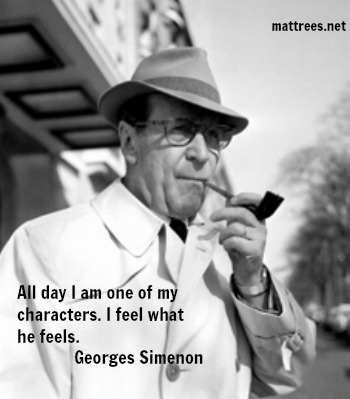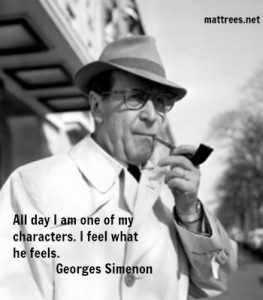A writer must feel what his characters feel to convey the emotion and sensation
 The great Belgian crime noveliest Georges Simenon described writing as exhausting. Not because he worked long hours, but because he inhabited the character about whom he was writing. If the character felt tense, Simenon made himself feel tense. If the character was devastated by some event, Simenon worked himself up into a hell of a state. That way he could write from within the experience. To get what I mean, read The Saint Fiacre Affair, most often published in English under the title Maigret Goes Home
The great Belgian crime noveliest Georges Simenon described writing as exhausting. Not because he worked long hours, but because he inhabited the character about whom he was writing. If the character felt tense, Simenon made himself feel tense. If the character was devastated by some event, Simenon worked himself up into a hell of a state. That way he could write from within the experience. To get what I mean, read The Saint Fiacre Affair, most often published in English under the title Maigret Goes Home
Many writers ignore this vital technique. In fact, when I’ve described this to other writers and told them that I try to do it, some of them mock the idea. But other creative artists, such as actors, view this technique as the basis of their craft.
In writing MOZART’S LAST ARIA, my historical novel about Mozart’s death, I talked with classical musicians about how they prepare to play. I needed to know this, so I could convey how Nannerl, Mozart’s sister, ought to approach the pieces she plays in the book.
Some classical musicians begin by associating a color with the piece they’re playing. Then they ask themselves, “What season does this make me think of?” Before they play, they’ll have that color and that season in their head. It makes them receptive to the emotion with which they must infuse the piece.
Try doing the same thing when writing. It’ll take you beyond plot and any sense of what the chapter you’re writing ought to be “about” – those are just details — and leave you with the essential emotional content.

 Write a thriller: Don’t use the magic hacker
Write a thriller: Don’t use the magic hacker
Leave a Reply